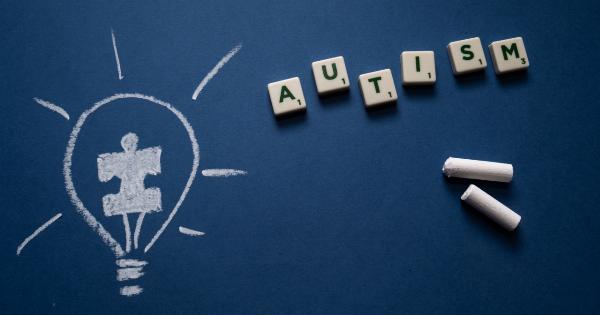Autism is a neurodevelopmental disorder that affects individuals throughout their lifespan.
It is characterized by persistent deficits in social interaction and communication, as well as restricted and repetitive patterns of behavior, interests, and activities. Autism spectrum disorder (ASD) is typically diagnosed in early childhood, but the specific signs and symptoms can vary widely among individuals.
Importance of Early Diagnosis
Early diagnosis of autism is crucial for several reasons. Firstly, it allows for early intervention, which has been shown to significantly improve outcomes for children with ASD.
Research has shown that children who receive early intervention services make greater gains in language, cognitive abilities, and adaptive behavior compared to those who are diagnosed later. Secondly, early diagnosis enables families to access support services and interventions tailored to their child’s specific needs.
Lastly, early diagnosis promotes understanding within the family and community, reducing stress and improving the overall quality of life for the individual with autism and their loved ones.
Age-Related Screening Tools
There are various screening tools available to assist in the diagnosis of autism at different stages of development.
These tools help healthcare professionals and parents identify potential red flags and determine whether further assessment is necessary. Below are age-related screening tools commonly used for autism diagnosis:.
Screening Tools for Infants and Toddlers
Early signs of autism can be observed as early as infancy. The following screening tools are designed to detect these signs in infants and toddlers:.
1. Modified Checklist for Autism in Toddlers (M-CHAT)
The M-CHAT is a widely used screening tool that consists of simple yes-or-no questions for parents to answer. It can be completed online or in a clinical setting.
The questionnaire is designed to capture behavioral characteristics associated with ASD in children between 16 and 30 months of age. It assesses various domains such as social interaction, communication, and repetitive behaviors.
2. Infant-Toddler Checklist
The Infant-Toddler Checklist is a screening tool specifically designed for infants and toddlers between 12 and 24 months of age.
It consists of a series of questions that assess behaviors commonly associated with ASD, including social responsiveness, communication skills, and sensory issues. The checklist is completed by parents or caregivers and can help identify infants who may be at risk for ASD.
Screening Tools for Preschool-Aged Children
Preschool-aged children show more pronounced signs of autism compared to infants and toddlers. The following screening tools are commonly used for this age group:.
1. Autism Diagnostic Observation Schedule (ADOS)
The ADOS is considered the gold standard for diagnosing autism in children from 12 months to adulthood.
It involves a series of structured play and social interaction tasks that allow clinicians to observe and assess a child’s social communication skills. The ADOS provides a comprehensive evaluation of autism symptoms across different domains and is typically administered by a trained professional.
2. Social Communication Questionnaire (SCQ)
The SCQ is a parent-reported screening tool that evaluates a child’s communication and social interaction skills. It is suitable for children between 4 and 40 years old.
The SCQ consists of 40 yes-or-no questions that assess various autism-related behaviors, including social responsiveness, communication abilities, and restricted interests.
Screening Tools for School-Aged Children and Adolescents
As children enter school, their social and communication difficulties may become more apparent. The following screening tools are commonly used for school-aged children and adolescents:.
1. Gilliam Autism Rating Scale (GARS)
The GARS is a comprehensive screening tool that assesses social interaction, communication, and behavioral patterns associated with autism. It is suitable for individuals aged 3 to 22 years.
The GARS includes several subtests, such as the Social Interaction Scale, the Stereotyped Behavior Scale, and the Communication Scale. The results help clinicians determine the presence and severity of autism symptoms.
2. Childhood Autism Rating Scale (CARS)
The CARS is a widely used tool for assessing the severity of autism symptoms in children aged 2 years and older. It consists of 15 items that rate various behavioral characteristics associated with autism.
The CARS helps clinicians differentiate between individuals with autism and those with other developmental disorders.
Conclusion
Early diagnosis of autism is essential for facilitating early intervention and providing appropriate support.
Age-related screening tools, such as the M-CHAT, ADOS, and GARS, assist healthcare professionals and parents in identifying potential signs of autism at different stages of development. Recognizing and addressing autism early in life can lead to improved outcomes and a better quality of life for individuals with ASD.





























